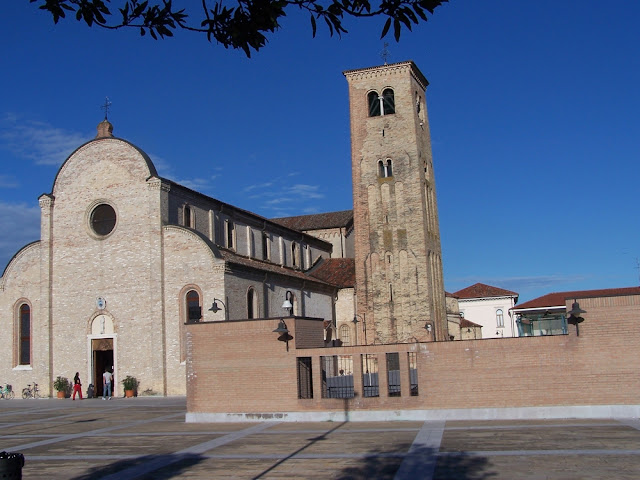Over the past decade or so, my reading choice had been restricted to fast-paced books, such as mysteries, thrillers, action and adventure books. Often I started introspective fiction books but most of the time, I was unable to finish them. Finally, this year, especially in the last quarter, something seems to have changed, I can again appreciate different kinds of books (except for the fantasy and horror genres, which I continue to avoid).
All together, there are 8 fiction books in my 2022 list - the first 5 of them belong to the action-mystery genre. My favourite book this year was the meditative and lyrical "Touch" by the Icelandic writer Olaf Olafsson.
The last part of this post is about my own book, which I have finally finished writing this year, after trying for almost 20 years. First, before I start, wishing you all a happy Christmas with the Santa Claus and his two elfs from the central station in Milan.

This is a historical murder mystery set in the New York of 1857. It brings together some very nicely drawn characters. The two detectives - Lord Jasper Lightner, as a British aristocrat and a war veteran struggling with opium dependence, who has been learning about scientific forensic investigations in Paris; and, Hieronymus Law, an Irish pleb in a jail, have very interesting interactions. Paisley, the haughty and correct butler of Jasper, is another likeable character. The theme of the book about the maltreatment of sex-workers including that of minor girls set against the historical context of the fight against slavery, is a bit too graphic and gritty, but interesting. So, if you like well-written historical mysteries, do read it.
The Chaos Kind by Barry Eisler
This is an action thriller with a child-trafficker, who can't be touched by the law because he has incriminating videos of some of the powerful Americans having sex with minors and if he will be taken then all those videos will be released.
However, the attorney general refuses to back down, she is determined to get this man. So killers are engaged to kill her. Another group of killers-turned-into-good-guys are out to safeguard her life. The book reminded me of the Japanese film "7 Samurai" and the Indian film "Sholay", where a group of rogues-turned-good guys come together to save the innocents from the villains. It has nice action sequences and is fast-paced.
This book is part of a series about the "good-guy killers". It was the first Barry Eisler book for me and I enjoyed it even without having read any of the previous books in this series. However, I am planning to read more of his books.
When Darkness Calls by Mark Griffin
I liked this book for its graphic descriptions of the forensic and psychological aspects of serial killers. The book is about finding a serial killer and has a criminal-psychologist Holly Wakefield as the story teller. She works in a prison and teaches students, and is called by the police to help the profiling of the criminal in an investigation. The detective, Bishop, with an artificial leg, is also characterised very nicely. Mark Griffin is a new author, but he seems to have a flair for writing psychological thrillers.
We Know You Remember by Tove Alsterrdal
It is a Scandinavian police procedural about 2 crimes, separated by a gap of decades. Olof was convicted for rape and murder of a girl 20 years ago, when he was only 14 years old. Since he was a minor, he was sent to a reform home.
On the way to a work, he stops at his old home and discovers that his father, whom he has not seen for 20 years, has been murdered. He is the obvious suspect. It is a book which builds slowly and then gains pace to finally conclude in a nice ending.
Tove Asterrdal has been writing since 2009, but was probably not translated into English earlier - in any case case, it was her first book for me.
The Darkest Sin by D. V. Bishop
Last year (2021), D.V. Bishop's book "The city of vengeance" was my favourite read.
This year, Bishop is back again, with medieval Florence during the Medici family era and his detective Aldo Cesare, who needs to protect his gay identity. While Aldo looks for the killer of a naked man found inside a nuns' convent, his constable Carlo Strocchi is looking for the killer of a body found in the river. Strocchi's investigation points towards Aldo as the killer. Once again, a very nicely done mystery with great reconstruction of life in medieval Florence. It was a joy to read it.
Sea of tranquility by Emily St John Mandel
It is difficult to classify this book, probably it would fit in best as science fiction or speculative fiction. It has inter-connected events in different eras spread over 500 years, starting from 1912 when the second son a British aristocrat is sent in exile to Canada. One of the eras in the book is in future and is about a writer from a moon colony visiting earth for a book tour.
This book is built like a jigsaw puzzle with pieces scattered over different time-periods, which come together very nicely in the end.
Emily St John Mandel is from Canada and has been writing books of different genre.
The Lovers by Paolo Cognetti
It is a small and lyrical book. Its original title in Italian "The felcità del lupo" means "The Happiness of a Wolf".
The book follows a year in the life of Fausto, a 40 years old man from Milan, who is in crisis because the woman he loved has left him. Fausto, running away from his old life finds refuge in a small mountain community, where he becomes a cook. During the summer tourists come and the ambience changes. During his mountain year, Fausto passes through loneliness and despair, has an affair, makes friends and rediscovers hope and his humanity. I loved reading it.
This year, I had read another beautiful book set in the Alps in northern Italy - it was "
Fiori nella Roccia" (Flowers in the Rock) by
Ilaria Tuti. It is not in this list because it has not been translated into English so far.
Touch by Olaf Olafsson
This is the book I liked most this year. It is about a 75 years old Icelandic man Kristoffel during the Covid pandemic, who receives a message from Miko, a Japanese woman, he had briefly known and loved in London, about 50 years ago. Miko had disappeared one day suddenly and Kristoffel had never forgotten her.
He starts on a journey to Japan to meet her as she is very ill. It is a beautiful love story which connects the atom bomb in Hiroshima in the second world war to the Covid pandemic of our time. Like The Lovers above, it is not very long and written in a simple, sparse but lyrical language, it was a very satisfying read and has a beautiful ending.
I found an
old interview of the writer whose actual name is Olafur Johann Olaffson- it seems that apart from being a writer he is a successful manager in a big multinational and lives in the USA - the interview touches on his background, his carrier and his books. In some ways, he reminded me of myself, except that he is younger and has many books to his credit while, till now, my writing so far has been restricted to a blog and a few short stories.
In Conclusion
During 2001, I was based in Geneva for a few months, while I was working with the World Health Organisation. I was alone as my family had stayed back in Italy. It was there that I had started writing a book. Since then, I had tried completing that book a few times and tried writing other books - mostly in English but a few times in Italian - but I was unable to finish any of them. Finally, in 2020, with my retirement and the Covid-related lockdown, I tried once again, this time in Hindi and I have finished writing it recently. I am keeping my fingers crossed that next year it will find a publisher in India.
I have 2 more books to write. I think of these 3 books as my "Amar Akbar Anthony" trilogy, the well-known film by Bollywood director Manmohan Desai, because like that film, all of my books deal with separated siblings and lost mothers and fathers.
I think that writing my book has given me back the ability to appreciate calmer and more introspective books. The writing process this time has been very fulfilling and enriching - often while writing I forgot the passing of time.
While wishing all my friends and readers a joyful Christmas and a fulfilling 2023, I am also hoping for a productive 2023 for my writings!
***
 The Uvs lake in Mongolia
The Uvs lake in Mongolia














.jpg)

.jpg)
.jpg)
.jpg)

.jpg)
.jpg)
.jpg)
.jpg)

.jpg)
.jpg)
.jpg)
.jpg)
.jpg)
.jpg)
.jpg)


.jpg)
.jpg)


.jpg)

.jpg)









